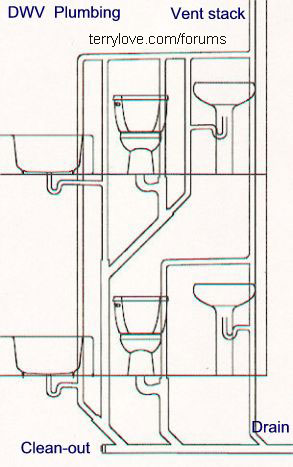I'm praying someone qualifed can help me out with this venting question (TERRY!!!!). I'm adding a shower to a half bathroom in my one story house and need to know what size vent pipe I need to support the fixtures. Right now I have installed a 3" vent pipe that goes through the roof and is connected directly to the main sewer stack in the basement. The toilet is directly on top of the stack with the 3" vent connected via a Y just below the toilet (which I assume is technically a wet vent, maybe???). Connected to the 3" vent in the attic is a 1.5" vent that serves a basement washing machine and laundry sink. The additional fixtures that need to be added and vented are the shower and 1 bathroom sink. My plan was to connect the the 1.5" vents from the shower and sink together with a sanitary T and then keep going to the 3" vent that goes through the roof. However, is the 3" vent sufficient to serve a washing machine, laundry sink, shower, toilet, and bathroom sink? Or do I have to isolate the sink, shower, or both and run one or more new vents through the roof? Thanks! I'm in NJ by the way.

Last edited:

